GATE-2012 ECE Q7 (digital)
Question 7 on digital from GATE (Graduate Aptitude Test in Engineering) 2012 Electronics and Communication Engineering paper. Q7. The output Y of a 2-bit comparator is logic 1 whenever the 2 bit input A is greater than 2 bit input B. The number of combinations for which output is logic 1 is (A) 4 (B)…

Noise Figure of cascaded stages
Following the discussion on thermal noise and it’s modeling and noise figure computation for a simple resistor network, in this article let us discuss the Noise Figure of cascaded stages.

GATE-2012 ECE Q15 (communication)
Question 15 on communication from GATE (Graduate Aptitude Test in Engineering) 2012 Electronics and Communication Engineering paper. Q15. A source alphabet consists of N symbols with the probability of the first two symbols being the same. A source encoder increases the probability of the first symbol by a small amount and decreases that of the…
2nd order sigma delta modulator
In a previous post, the variance of the in-band quantization noise for a first order sigma delta modulator was derived. Taking it one step furhter, let us find the variance of the quantization noise filtered by a second order filter. With a first order filter, the quantization noise passes through a system with transfer function…
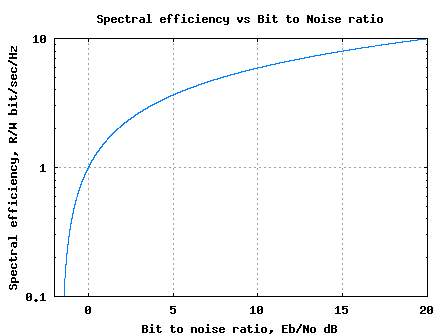
Bounds on Communication based on Shannon’s capacity
This is the second post in the series aimed at developing a better understanding of Shannon’s capacity equation. In this post let us discuss the bounds on communication given the signal power and bandwidth constraint. Further, the following writeup is based on Section 12.6 from Fundamentals of Communication Systems by John G. Proakis, Masoud Salehi
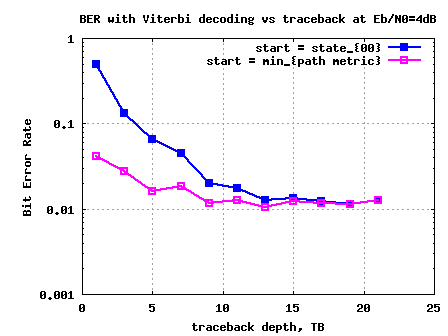
Viterbi with finite survivor state memory
In the post on Viterbi decoder and soft input Viterbi decoder, we discussed a convolutional encoding scheme with rate 1/2, constraint length and having generator polynomial and having generator polynomial . If the number of uncoded bits is , then the number of coded bits at the output of the convolutional encoder is . Decoding…
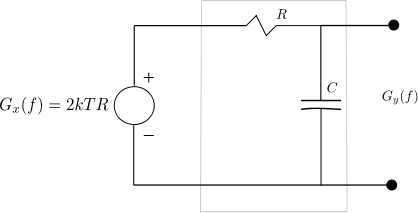
Thermal noise of RC low pass filter
This post discuss about the thermal noise in RC low pass filter. Using the noise equivalent model using resistor with a voltage source, which gets passed through a no noise RC low pass filter. The noise power at the output is computed by integrating the output voltage spectral density over all frequencies.

Comparing 16PSK vs 16QAM for symbol error rate
In two previous posts, we have derived theoretical symbol error rate for 16-QAM and 16-PSK modulation schemes. The links are: (a) Symbol error rate for 16-PSK (b) Symbol error rate for 16-QAM Given that we are transmitting the same number of constellation points in both 16-PSK and 16-QAM, let us try to understand the better…
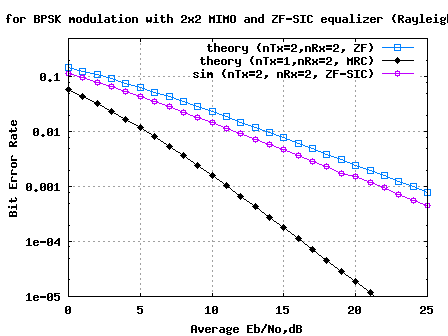
MIMO with Zero Forcing Successive Interference Cancellation equalizer
The post on MIMO with Zero Forcing equalizer discussed a probable way of equalizing a 2×2 MIMO channel. The simulated results with the 2×2 MIMO system with zero forcing equalizer showed matching results as obtained in for a 1×1 system for BPSK modulation in Rayleigh channel. In this post, we will try to improve the…

Coherent demodulation of DBPSK
In a previous post, we discussed about a probable first order digital PLL for tracking constant phase offset. The assumption was that as the phase offset is small and the bits gets decoded correctly, the phase difference between the ideal and actual constellation gives the initial value of phase. However, in typical scenarios it may…
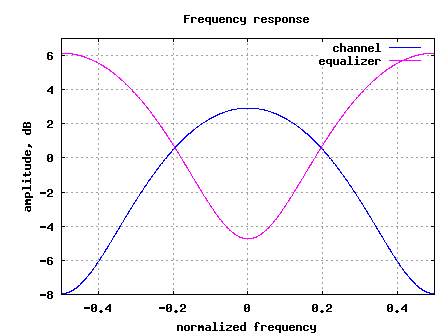
BER for BPSK in ISI channel with Zero Forcing equalization
In the past, we had discussed BER for BPSK in flat fading Rayleigh channel. In this post, lets discuss a frequency selective channel with the use of Zero Forcing (ZF) equalization to compensate for the inter symbol interference (ISI). For simplifying the discussion, we will assume that there is no pulse shaping at the transmitter….
GATE-2012 ECE Q26 (electronic devices)
Question 26 on Electronic Devices from GATE (Graduate Aptitude Test in Engineering) 2012 Electronics and Communication Engineering paper. Q26. The source of a silicon (), n-channel MOS transistor has an area of and a depth of . If the dopant density in the source is , the number of holes in the source region with…
OT: Migration to a Deep Blue template
After almost 6 months with the Smashing Theme template, its time for a change. Recently I stumbled upon the Deep Blue template from DailyBlogTips. I liked the clean blue-green-white combination and and felt it might be a good fit for www.dsplog.com. Hope you agree. One key feature which I like is addition of tag cloud…